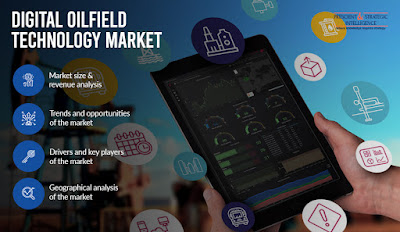Digital Oilfield Technology Market Analysis, Leading Players, Growth Drivers and Future Scope
With the rapid industrialization and globalization, the requirement for oil & gas is growing. Oil & gas are major fuels that are used across all industries. Companies in the oil & gas sector have to carry out extensive exploration & production (E&P) activities to discover crude reserves; these activities are time-consuming and cost-intensive. Purification of shale gas and crude oil is another step that adds to the economic burden on companies. To achieve this, they are taking help of the digital oilfield technology, which makes use of artificial lift systems, video data analytics, and sensors for improving the drilling and transportation aspects of the whole process. The deployment of this technology in the E&P activities not only speeds up the production process, but also helps in lowering down the operational costs, thereby resulting in higher returns on investments for the companies.
Digital oilfield technologies combine data analysis techniques and advanced software, which are deployed for simplifying the E&P activities and increase the profitability of oil & gas production operations. The digital oilfield technology market is expected to grow at a 4.6% CAGR during 2018–2023.
The technology is deployed in different processes, such as drilling optimization, production optimization,asset management, safety management, repair and maintenance, and reservoir optimization. During 2013–2017, the technology was used the most for production optimization. It is the measuring, modeling, analyzing, and implementing measures for the enhancement of productivity on the site of extraction. In fact, in the coming years as well, the technology would continue to be used the most for the same process.
For a long time, the focus has been on onshore E&P activities, which has put a burden on onshore reserves. Therefore, companies are now moving toward offshore discoveries. The potential that the offshore reserves hold was indicated by the discoveries made by two of the world’s biggest oil companies BP and Chevron in the North Sea and Gulf of Mexico. The operating depth limit for conducting ultra-deep-water projects goes over 10,000 feet from few hundred feet. Because of the depth, these activities require highly specialized instruments, such as autonomous drones, robotics, 3D seismic testing, and remote sensors. Thus, the oilfield digital technology market is set to grow in the coming years as the companies are venturing into more hostile environments for oil & gas E&P.
Read more: https://www.psmarketresearch.com/market-analysis/digital-oil-field-technology-market



Comments
Post a Comment